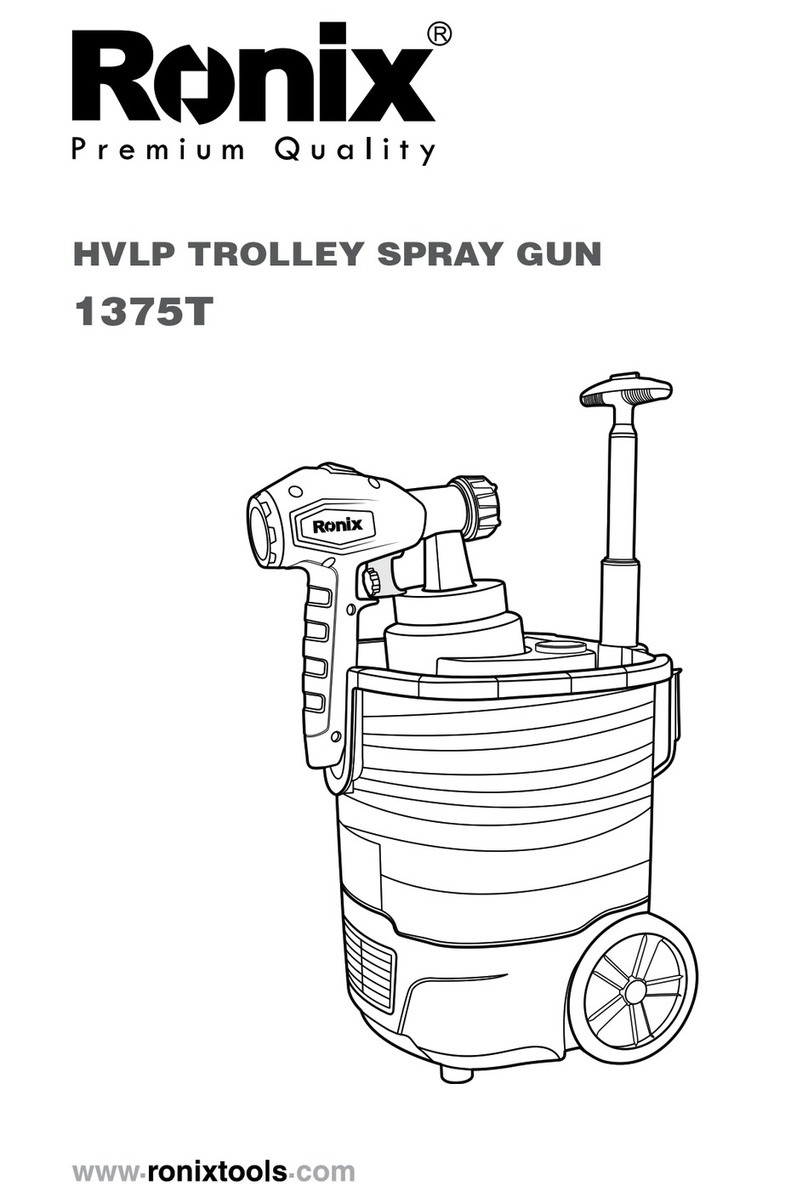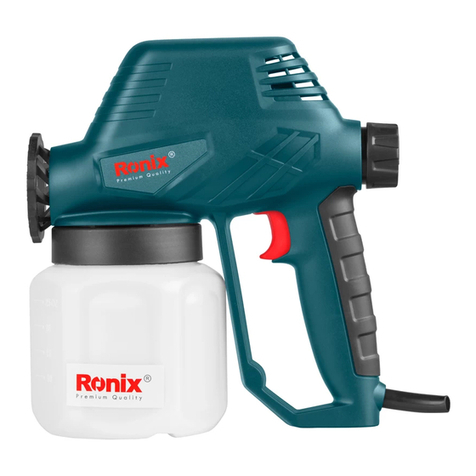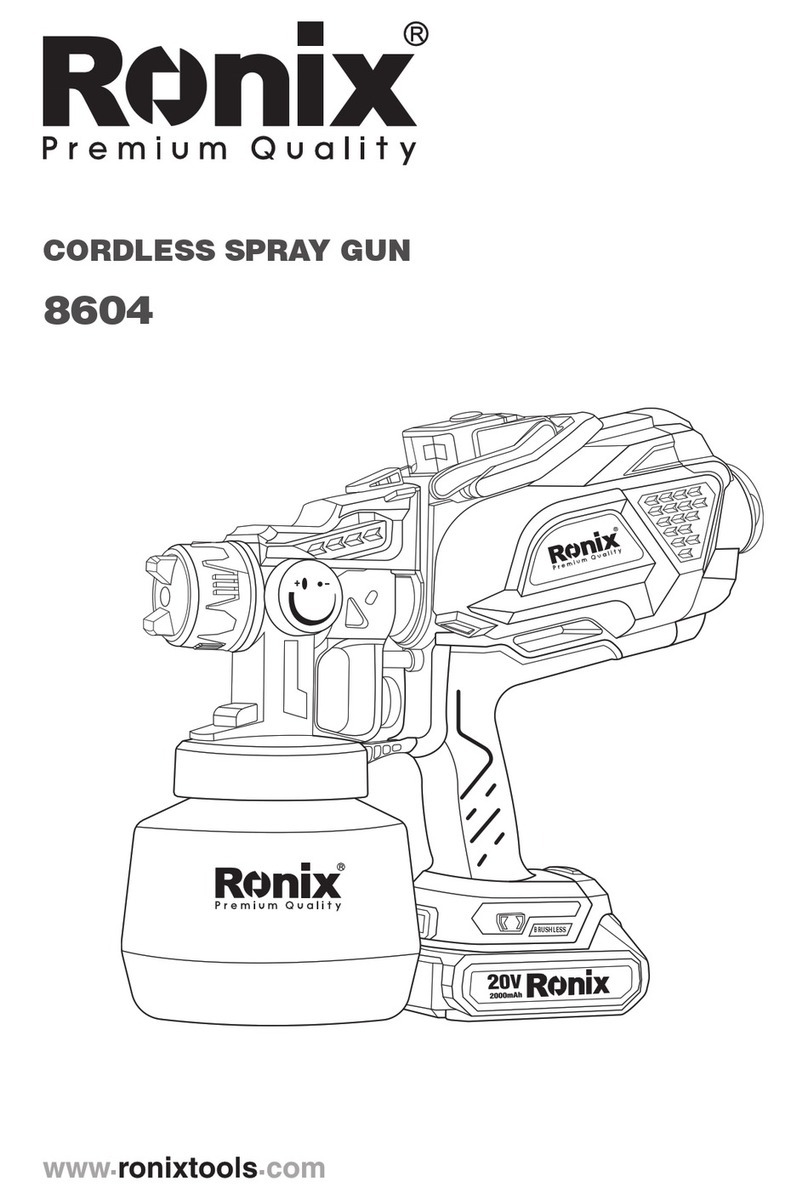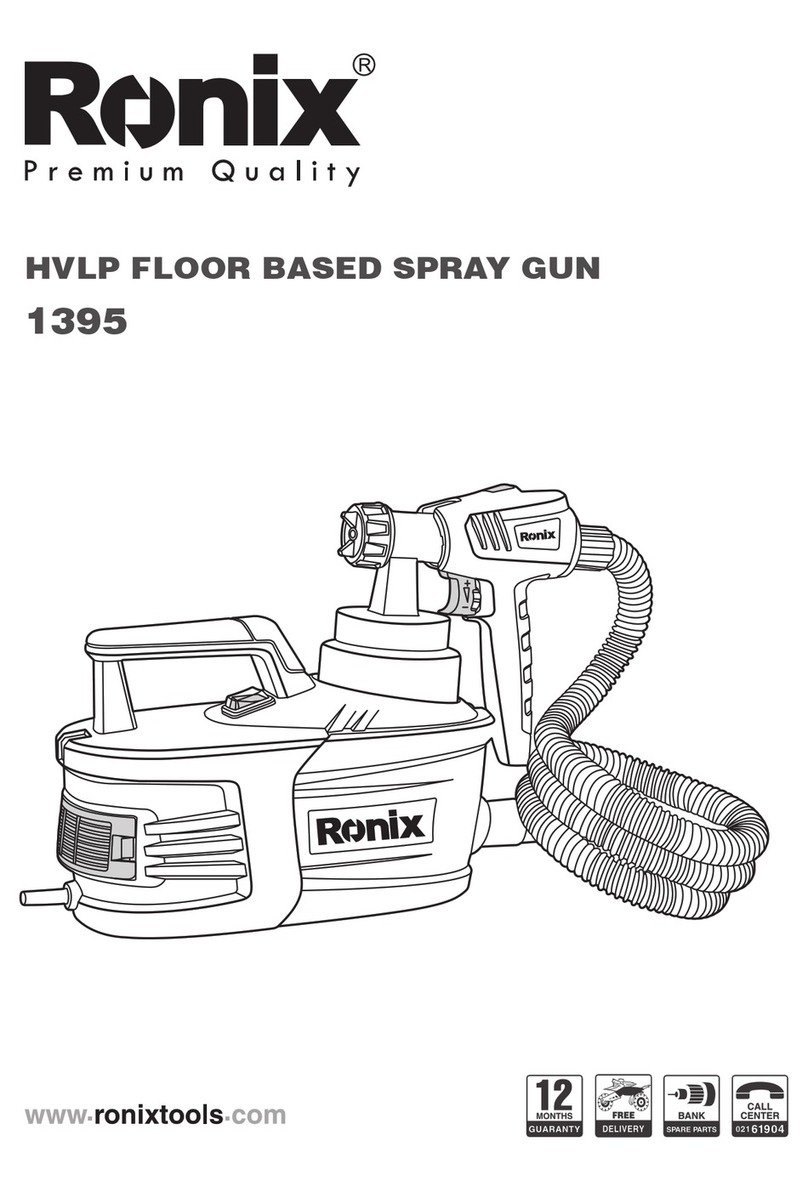
SPRAY GUN
6
off before you connect it to the power supply, pick it up or carry it.
Accidents can occur if you carry the power tool while your nger is
on the switch or if you connect the power tool to the power supply which
it is on.
Remove setting tools or wrenches before switching on the power tool. A
tool or wrench that is in a rotating tool part can lead to injuries.
Avoid an unnatural posture. Ensure that you are standing securely and
have your balance at all times. This ensures that you can control the tool
better in unexpected situations.
Wear suitable clothing. Do not wear wide clothing or jewelry. Keep your
hair, clothes and gloves away from moving parts. Loose clothing, jewelry or
long hair can be caught in moving parts.
Do not lull yourself into a false sense of security and do not think
yourself above the safety rules for electric tools, even if you are familiar
with the electric tool following extensive practical experience. Careless
use can lead to serious injuries in fractions of a second.
.USAGE AND TREATMENT OF THE ELECTRIC TOOL
Do not overload the tool. Use the power tool designed for the work that
youare doing. You work better and safer in the specied performance
range if you use the suitable power tool.
Do not use power tools whose switch is defective. A power tool that cannot
be switched on or off is dangerous and has to be repaired.
Remove the plug from the socket before carrying out tool settings,
changing accessories or putting the tool away. This precautionary measure
prevents unintentional starting of the tool.
Store unused power tools so that they are inaccessible to children. Do
not letpersons use the tool who are not familiar with it or who have not
read these instructions. Power tools are dangerous when they are used
by inexperienced persons.
Take proper care of your tools. Check whether the moving parts
functiontrouble-free and do not jam, whether parts are broken or
damaged so that the tool function is impaired. Have damaged parts
































